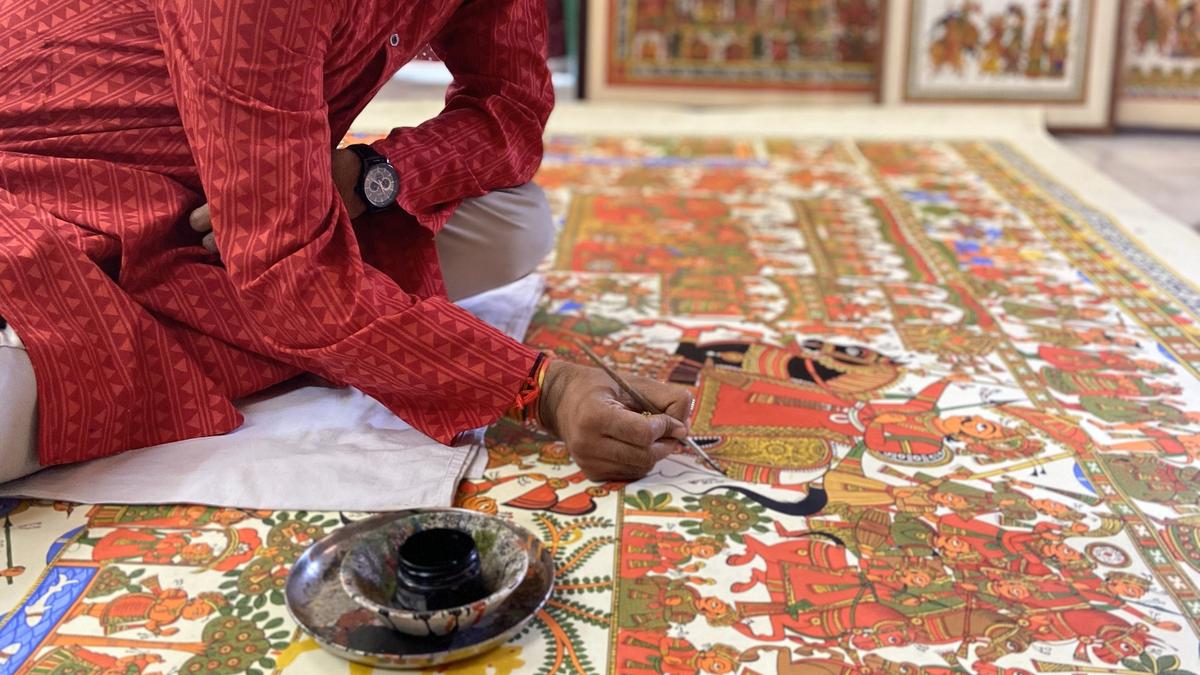
How the Ramayana has served as a cultural and diplomatic bridge among Southeast Asian countries
The Hindu
ASEAN-India Artists’ Camp in Shillong explores cultural connections through Ramayana-themed art, fostering diplomatic ties through creativity.
The Association of Southeast Asian Nations (ASEAN) countries and India share common cultural and civilisational linkages that go back a very long time. A lot of similarities can be found in their literature, architecture and religious texts as well as folk practices. The Ramayana is an epic that has been a connecting factor among Southeast Asian countries, and has impacted their art forms in several ways.
It is with this in mind that the third edition of the ASEAN-India Artists’ Camp returns for a 10-day residency in Shillong from March 29 to April 7. The theme of the festival is ‘Echoes of Ramayana: Artistic Journeys across ASEAN and India’. It brings together 21 well-known and upcoming folk and contemporary visual artists from 10 ASEAN member states, including Singapore, Thailand, Laos, Malaysia, Philippines, Myanmar and Cambodia, one artist from Timor Leste as an observer country, and 10 artists from India. The artists will showcase their interpretation of the Ramayana through paintings.
Organised by the Ministry of External Affairs in collaboration with SEHER, the camp marks 10 years of India’s Act East Policy, using art as a medium for cultural dialogue. “The Ramayana is not just a religious epic, but a cultural one as well. We want to know the echoes and the resonance that the text has in the ASEAN region,” said Sanjeev Bhargava, founder-director of SEHER.
During the camp, the artists will talk about various forms of painting guided by mentors of the camp — Samindranath Majumdar, Tanmoy Samanta and Yogendra Tripathi. Each artist will create one work of art, representing different styles — modern, traditional and impressionist — while still carrying the essence of their own culture and history.
Cheriyal scroll painting artist Vinay Kumar feels the camp offers him a great opportunity to showcase his understanding of the epic. For Thai professor Panich Phupratana, this is his maiden visit to India. His work focusses on Hanuman as a powerful and intelligent warrior serving Rama. “I have seen Hanuman portrayed both in Indian films and in Thai traditional art. So, I decided to compare these two versions to show that Thai beliefs and religion share the same origins as those in India,” he shared.
Growing up in Malaysia, Moahana Kumara Velu was exposed to the Ramayana through Wayang Kulit, a traditional shadow puppet theatre, and other local performances. Though visually different from Indian depictions, the essence remains familiar for her. “The Ramayana theme offers a powerful space for reflection and reinterpretation, and I’m especially drawn to the story of Sita. Her strength, quiet resilience and grace resonate deeply with me. While this will be my first work inspired by the Ramayana, I see it as a meaningful opportunity to explore its emotional and cultural layers through my own lens,” she said.
The participating artists will also take part in workshops on classical dance, music and handicraft, and explore India’s artistic traditions in a collaborative setting. They will also hold interactive sessions with art students in Shillong and conduct a workshop at a local school, where they will share their skills and experiences with young learners.





















 Run 3 Space | Play Space Running Game
Run 3 Space | Play Space Running Game Traffic Jam 3D | Online Racing Game
Traffic Jam 3D | Online Racing Game Duck Hunt | Play Old Classic Game
Duck Hunt | Play Old Classic Game











